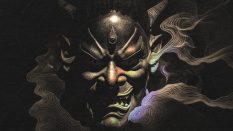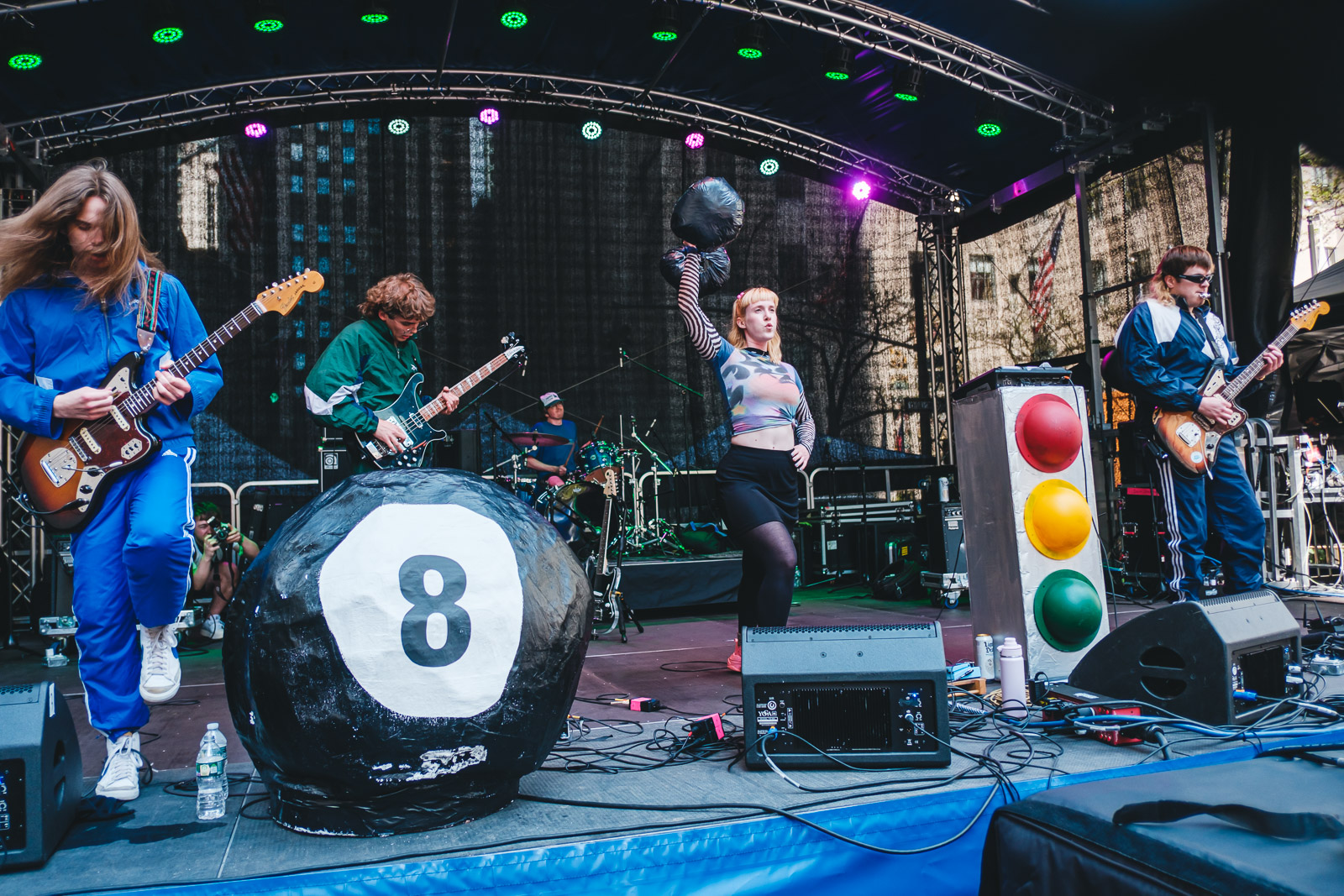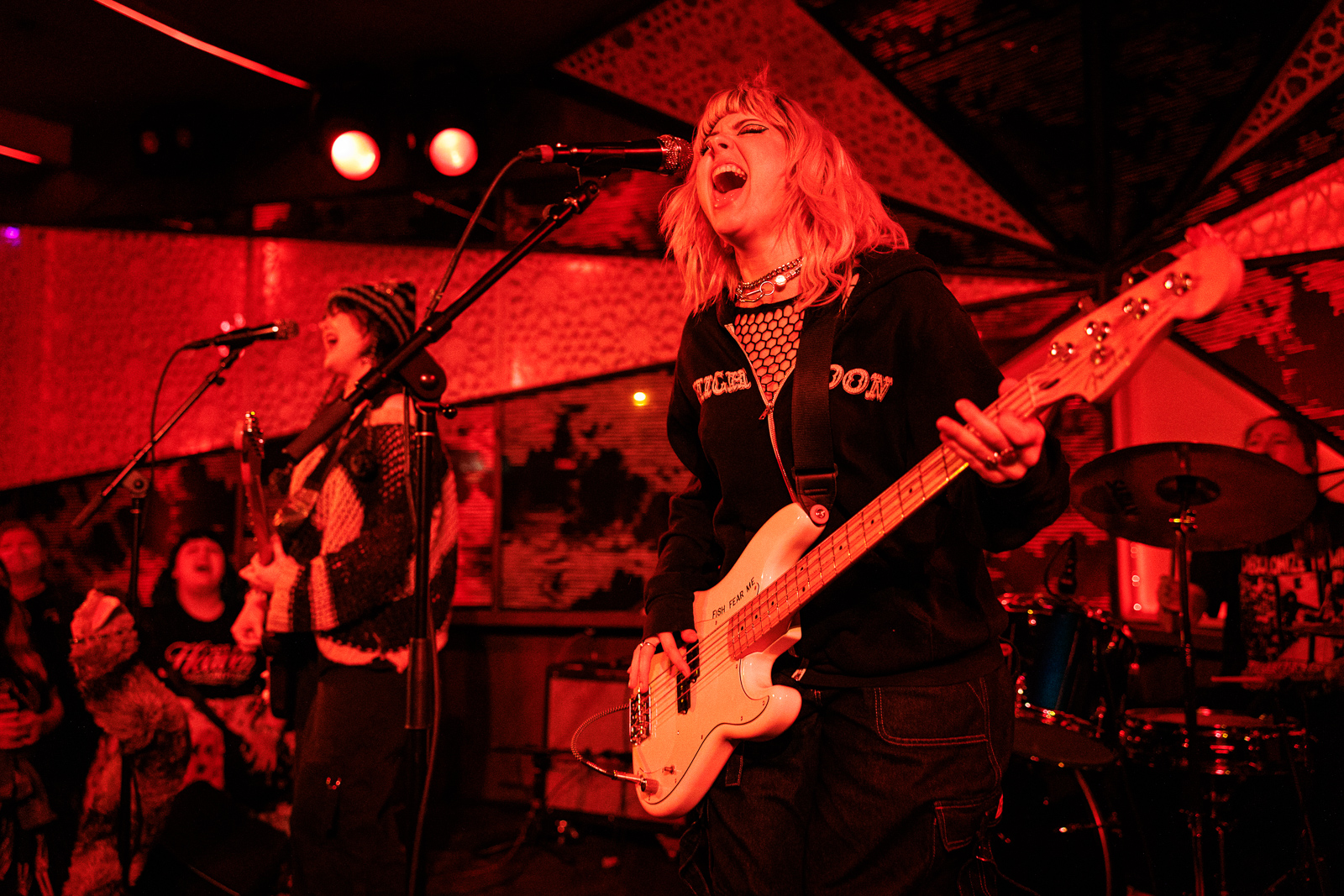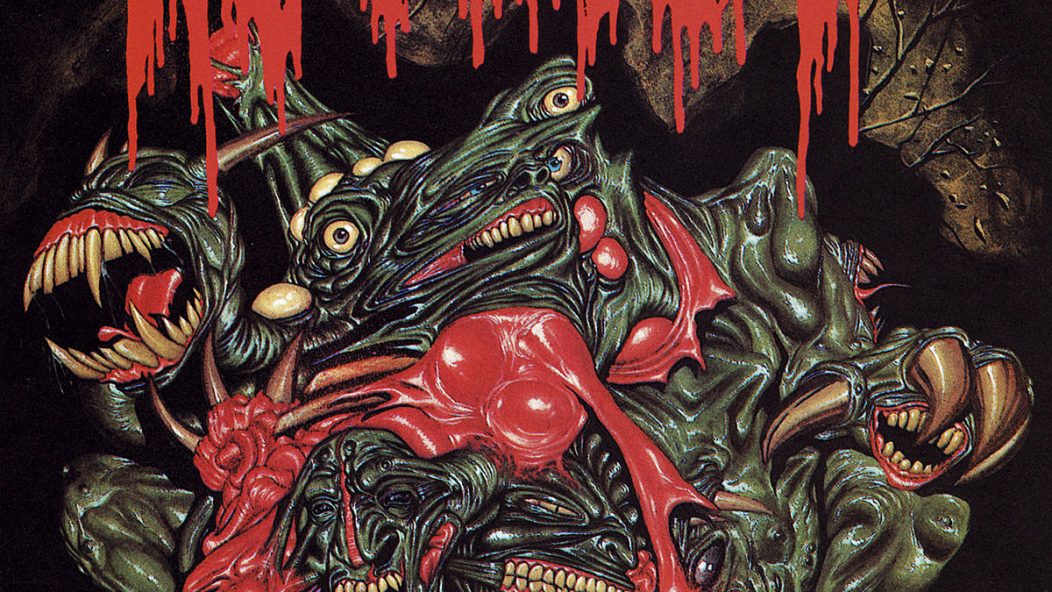
The Brain-Erasing Legacy of Autopsy's Mental Funeral (Retrospective + Interview with Chris Reifert)
Death metal has changed quite a bit since the birth of the genre. Every aspect of sonic extremity that could be conceived has been pushed, be that the tempo, production, level of consonance (what’s usually called “harmony”), chromaticism, vocals, and everything in between. Formed in 1987 in California, Autopsy have seen all of that evolution from the very start and always chose during their formative years to be a part of the group pushing boundaries, ignoring at all times what might prove to be more marketable or trendy to pursue their own form of sonic barbarism and their own always-disgusting horror aesthetic.
Even at the start, Autopsy was controversial in many ways. Their first album, Severed Survival (Peaceville Records, 1989), featured a LP cover of a man being torn apart, which proved aggressive enough to be censored; issues of the album for years after the first press came with less gore-heavy alternate artwork. This was no one-off, and each album would be increasingly disgusting until culminating with 1995’s Shitfun, where the band leaned as far into the grotesque and horrific as they could and promptly broke up. When asked about why their lyrical themes “get sicker from album to album” in a 1993 interview, Chris mentioned that most bands get “weaker, wimpier and more commercially listenable” with each album, and “we figured that it would be good for us to do the opposite” (Voices From the Dark Side, Issue #2).
That focus on standing out from the herd and ignoring what was necessarily the best for them commercially extended past their aesthetics, and carried into the band’s songwriting. A revelation to many in the scene, the band’s songs focus on alternating slow and fast parts, which was in direct contrast to the need for speed that dominated the contemporary death metal world at the time. Jari Heinonen from seminal Finnish death metal band Funebre put it best when discussing its influence on his music — “Brutal, raw, real fast one minute and then very slow and heavy the next.” (Rotting Ways to Misery: The History of Finnish Death Metal, p. 273).
…
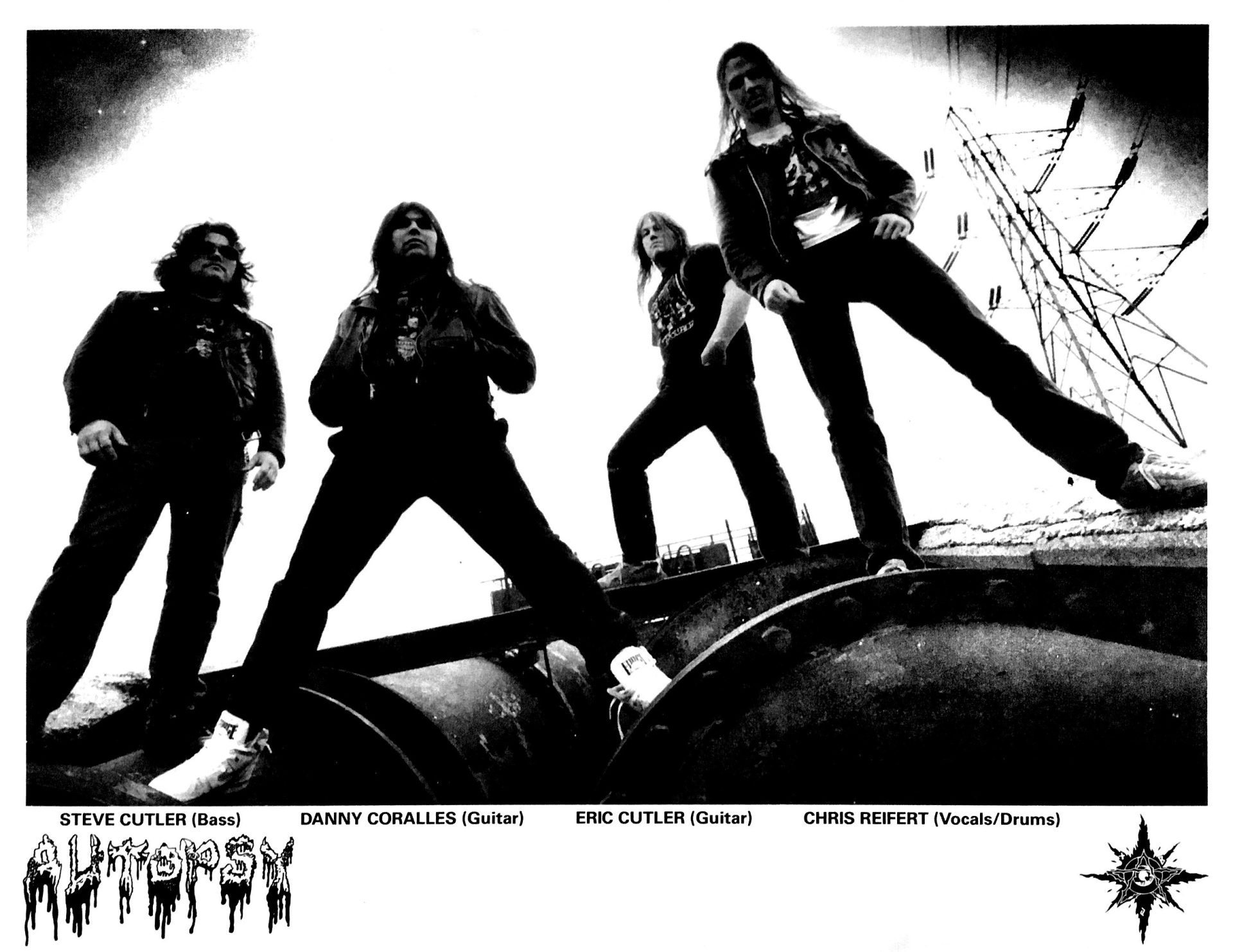
…
By the time Autopsy had gotten to Mental Funeral, which was first released 30 years ago today, they had really figured out that perfect blend of slow to fast, pushing boundaries in a way that set the stage for later bands to canonize death/doom as a genre without losing the powerful death metal edge that has always been an equally important hallmark of their sound. Massive rhythms battle with guitarist Eric Cutler’s signature lead melodies, and each song contains within it the potential to completely go off the rails with speed and aggression or to slow to a painful dirge, always leaving listeners wondering.
Though a death metal band through and through, it’s important when listening to those doomier sections to understand that they came as much from an interest in outright traditional doom metal as an interest in having dynamics or just in slowing down their death metal assault — a distinction that has made it difficult for later death-obsessed gore freaks to believably recreate Autopsy’s sound. Even as far back as an interview with 1988’s Satanic Death #3, Chris mentioned Trouble and Saint Vitus as influences; that impossible-to-fake direct influence differentiates Autopsy from even other death metal bands at the time that had slower sections here and there, and the contrast makes their more ripping sections hit that much harder.
The band’s predilection for influences outside of thrash and death doesn’t end at doom metal, and their love for punk is well-documented, with several members playing in a variety of punk and punk-influenced bands across the years (most notably Abscess, the death/punk band that started after Autopsy’s initial breakup and contained at its inception the entire Autopsy lineup from their final tour, minus Eric Cutler and with Clint Bower from Hexx instead). The rhythm section’s brutal simplicity comes from that influence and is a lot of what makes Autopsy’s music so effective; in their shorter songs they’re in and out too quickly to escape their rage, and in longer ones there’s room for huge buildups and breakdowns that capture a feeling that not many bands have since. Though the combination is easy to worship in hindsight, it was not always well-received. As Chris noted in an interview with Pit Magazine #8 in 1992 regarding Mental Funeral, “[s]ome people said, Oh, it’s all slower. It sucks or whatever.” During the same segment he noted that he doesn’t care—as always, the band was determined to follow their hearts, and that iconoclastic touch that was equally willing to slaughter with speed as with slowness is a large part of what always made Autopsy so special.
Another standout on Mental Funeral is the way that morbid melodies twist over the top of rhythms, each both a way to drive a song forward and a massive hook. Though there were certainly more directly melodic bands out there influencing the death metal hordes to come, one needs to listen no further than “Slaughterday” to hear the roots of what would become every creepy melodic lead over pulverising riffs down the line.
…
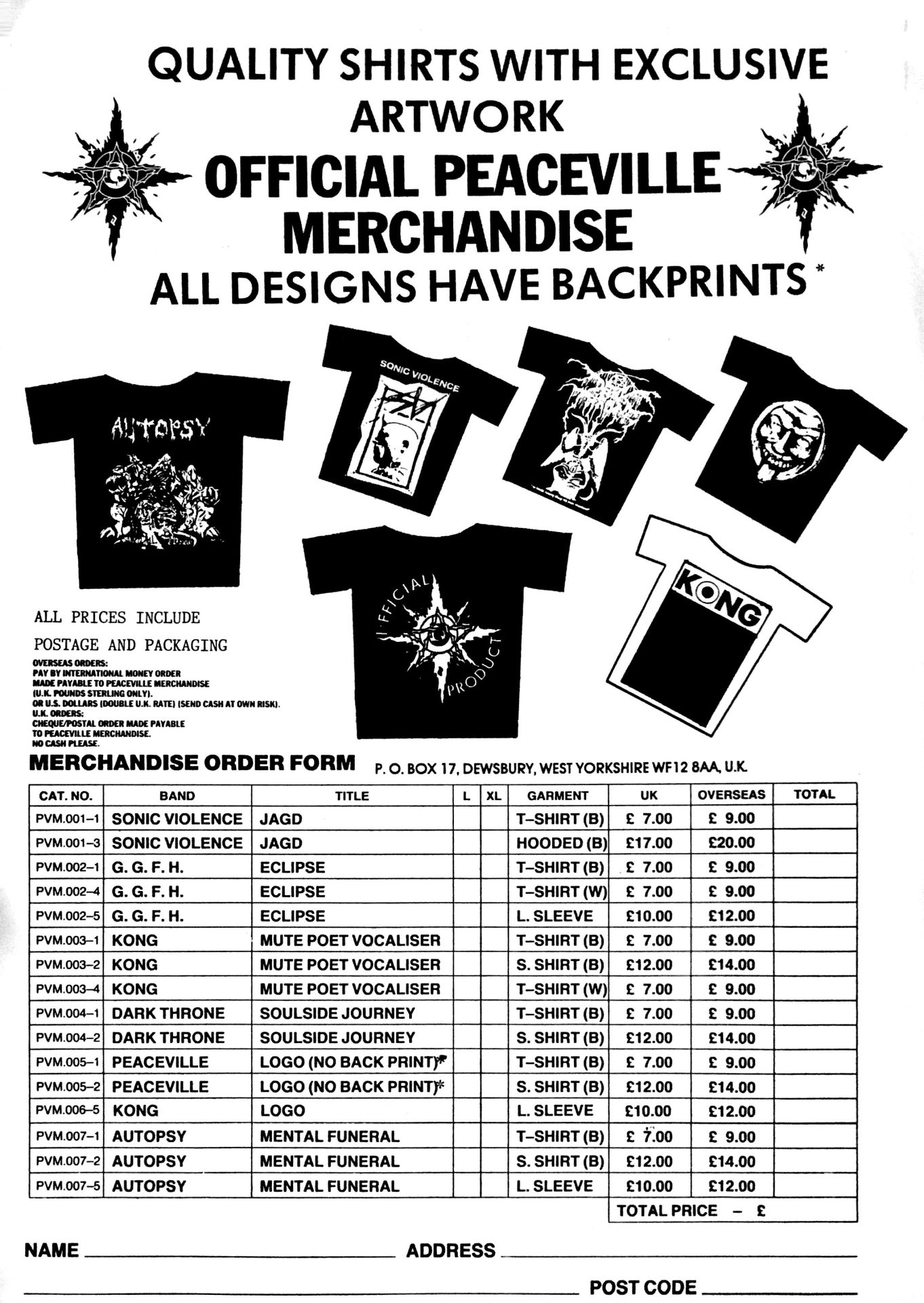
Photo scan provided by Paul Riedl.
…
All of this is rounded out by Chris’ punishing performance behind the kit and his gnarly vocal performance. The two elements pull together all of the disparate influences that go into Mental Funeral and make it into a package that may not even seem unusual to a fan without context. Described years ago by a friend as “the sound of a garbage bag hitting the side of a dumpster,” the famously clunky drums of the early-years Autopsy material cut perfectly through the mix to propel the grotesque mess of the album forward as much as his searing vocal delivery, which alternates between a sickening mix of screams, howls, and lower growls that is perfectly calculated to sit in the mind for as long as possible. It’s almost impossible to imagine the album with another vocalist, so it’s fortunate that Autopsy never found a suitable frontman, as Chris mentioned wanting to do in the legendary Slayer Mag in volume #7 (1989).
With an already excellent band firing on all cylinders and coming fresh off a string of successes to record their sophomore, it isn’t a mystery why the result is still held up as one of the finest records in all of death metal even decades later. Chris Reifert, who has provided vocals and drums for the band since day one, is here today to talk about the album.
…
…
Chris, it’s been some 30 years since Mental Funeral came out. Do you have anything to say about it looking back in hindsight?
Mostly I’m stoked that people still like it 30 years later. That’s pretty nuts. Otherwise looking back, it’s a pretty strange and dark record. Not that all death metal records aren’t dark but it has a unique atmosphere about it that came about without a preconceived notion of what we were doing.
I’m going to chalk it up as accidental magic.
Were there ever any plans to re-record Retribution For the Dead, or was it always intended to be an exclusive on the preceding EP?
No, we never intended to re-do that one. I’m not even sure why we re-did the other two tracks. We may have used the Retribution For The Dead EP as a test to see how we liked Different Fur studios, but then again it’s been 30 years so it’s a bit hazy.
What do you think made Mental Funeral different from Severed Survival before it and Acts of the Unspeakable after it?
Sometimes I feel like it has way more doomy stuff in it than Severed Survival, but when I listen to it I always get reminded that there’s lots of speedy stuff in there too. We never even properly mixed it as we were too busy being in the moment and frankly, drinking and smoking a LOT so it has a really odd and raw sound to it. It feels a little psychedelic I dare say but without sound effects or anything like that. With the exception of the expertly executed bong by Hammy of course. And it may have been an angel dust bong hit now that I think about it. Haha! It was also our first album that had necrophilia based lyrics, which would become a popular theme.
You mentioned taking influence in some old interviews from bands like Trouble and Saint Vitus. Since you mention that doomier aspect to the album, were there any other doom bands particularly high in the rotation when you guys were doing the Mental Funeral songwriting?
Besides those two we also listened to quite a bit of Black Sabbath, Witchfinder General and Candlemass. And now that I think about it, Goatlord’s Sodomize the Goat demo got played a few times. That had some really chunky, slow doomy stuff in there.
As a tie-in to the previous question, were there any particular musical influences on Mental Funeral that weren’t already in the picture on Severed Survival?
One that comes to mind is the slow quiet part on “In the Grip of Winter.” That riff was a direct steal from The Residents “Eskimo.” I just switched the notes a little bit. Hhmm, what else…the main riff in “Destined to Fester” was influenced by Bathory’s “Call From the Grave.” Beyond those I can’t think of much else that crept in there as far as outside influences go, although the title to “Twisted Mass of Burnt Decay” was kind of a nod to the long descriptive titles that Blasphemy used to have. And now that I think of it, the title to “In the Grip of Winter” was inspired by “In the Grip of a Tyrefitter’s Hand” by Budgie. Little things like that here and there, ya know?
Mental Funeral came out two years after Severed Survival, and Severed Survival came out two years or so after you formed. How did the amount of time you spent writing Mental Funeral compare to Severed Survival, and to the records that came after it?
I don’t know, it always felt like we were flying by the seat of our pants but somehow in slow motion, which probably makes no sense. Haha! What can I say? We were young and ready to tear shit up and writing came from a more instinctual rather than a calculated place. Same as today which is a cool reminder of why we do this stuff in the first place, ya know?
Through the years, you guys have played “Twisted Mass of Burnt Decay” and “In the Grip of Winter” the most from the album [per setlist.fm statistics]. Are those your favorite from the record, or just the ones that translate best live?
I don’t know, they’re just fun to play I guess. They’re not too complex but provide a good amount of impact in a live setting. We talked about playing all of Mental Funeral live for a second to celebrate its 30th anniversary this year but we all know what happened on the gig front. Ah well, who knows what the future holds.
Autopsy plays by far the most from Severed Survival on average, about three times as many songs on average as Mental Funeral ones. Is that because of fan expectation or personal preference?
Both maybe, but now that you mention it we should up our game and get weird with deep cuts and shit next time we play live. Haha!
A lot of what we do we do without overthinking. But hey, tomorrow’s shows are wide open and maybe we’ll do all Bay City Rollers covers just to blow people’s minds.
Are there any other tracks in particular you’d want to bring back to the setlist from Mental Funeral at some point?
Who knows? We’ll have to figure that out at some point.
To close up, do you have anything else to say about Mental Funeral, and if you guys end up doing that full anniversary set of the album down the line, is there anything from the album you’re particularly looking forward to playing?
I can’t think of anything else to say about it at the moment besides I’m happy that people still like it after all this time. That feels pretty awesome. And I guess any of those songs would be cool to play. We’ve played almost all of them at one point or another, it’s just been a long time for some of them. As soon as proper gigs are a thing again we’ll have to give it some thought.
…
Mental Funeral released on April 22nd, 1991 on Peaceville Records.







